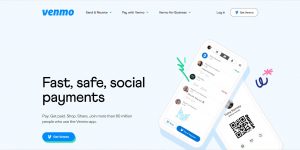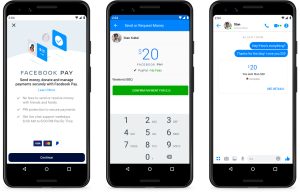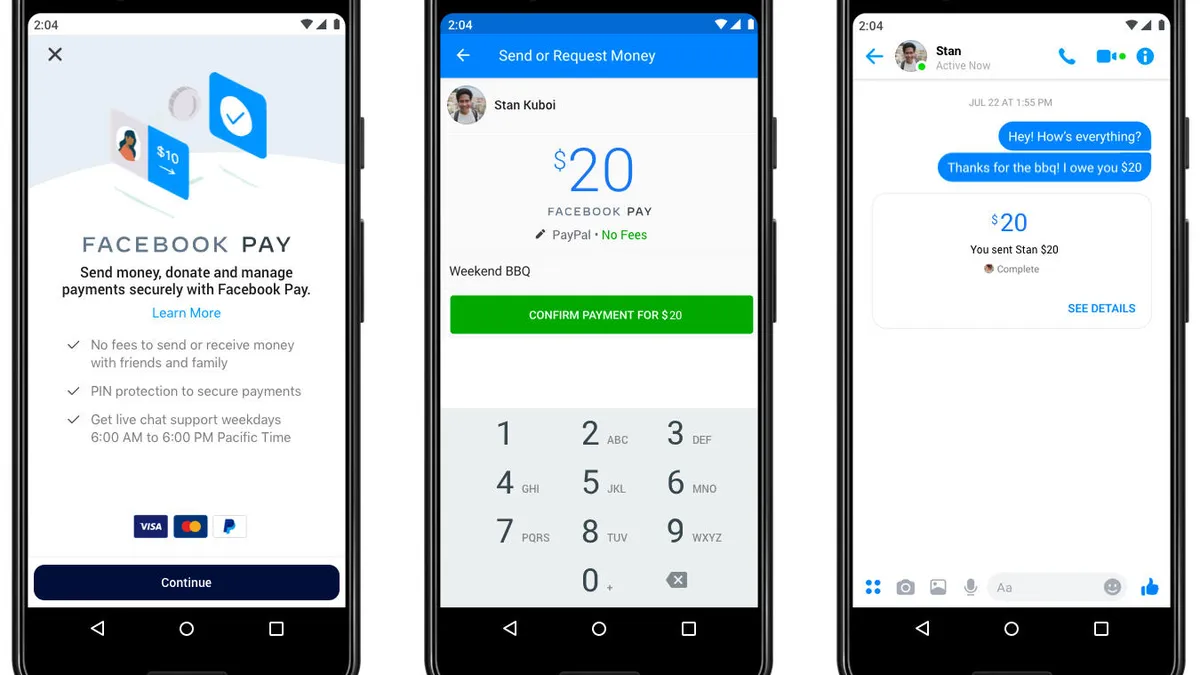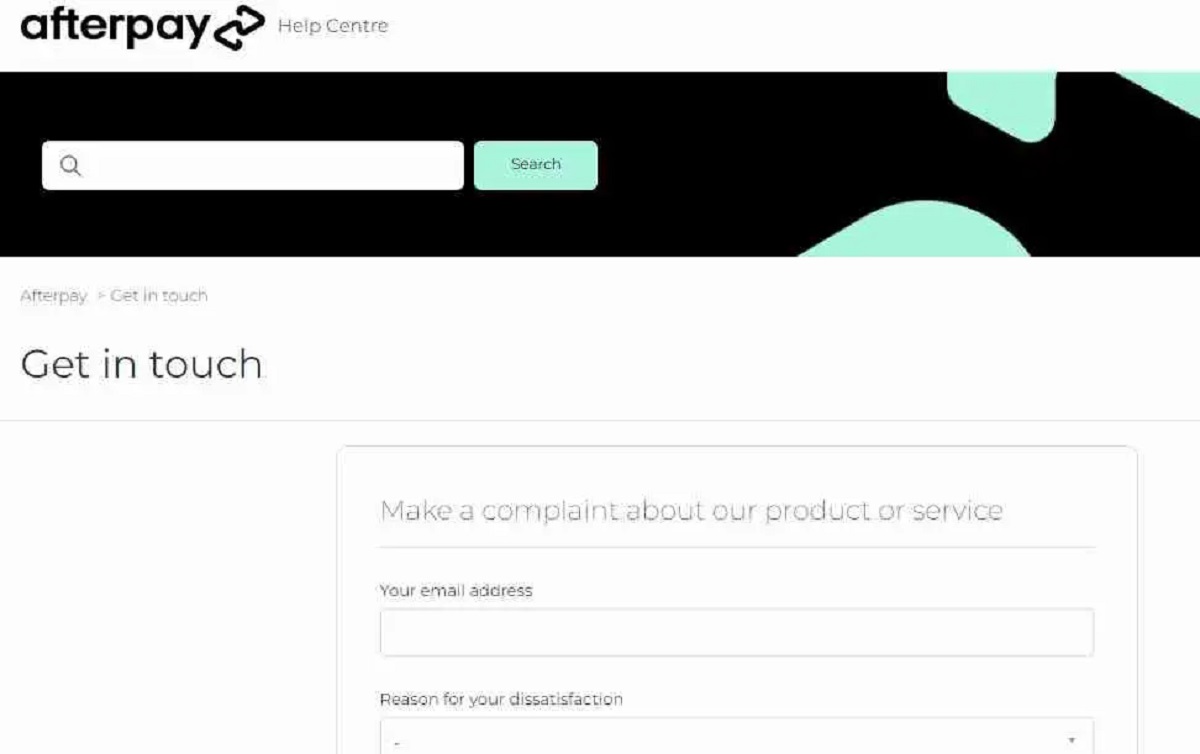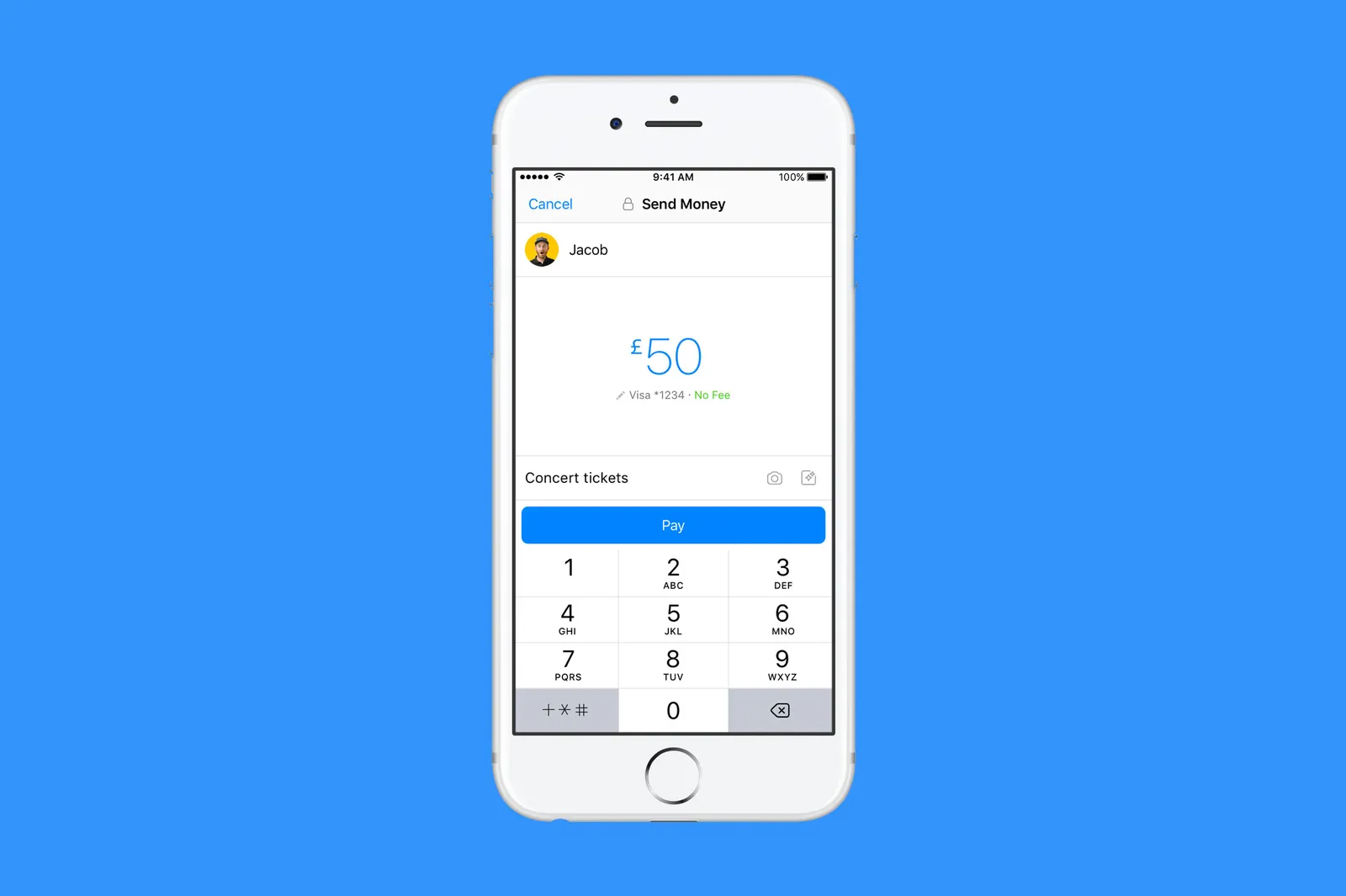Introduction
When it comes to advertising on Facebook, one of the burning questions for businesses and marketers is how much Facebook charges for ads. While there is no set answer to this question, as the cost of advertising on Facebook can vary greatly depending on several factors, understanding the key elements that determine Facebook’s pay charge can help businesses plan and optimize their ad budgets effectively.
Facebook operates on an auction-based advertising model, where advertisers bid for ad space and pay based on the engagement their ads receive. The cost of running ads on Facebook is determined by a dynamic pricing system that takes into account a variety of factors, including the advertiser’s budget, ad placement, ad relevance, target audience, geographic location, industry competition, and more.
This article will explore the factors that determine Facebook’s pay charge and provide insights into how businesses can navigate these considerations to optimize their advertising investment. By understanding these factors, businesses can make informed decisions and develop effective strategies to achieve their advertising goals on Facebook.
So, if you’re ready to unravel the mystery of Facebook’s pay charge, let’s dive into the factors that shape it and discover how you can make the most out of your advertising investment on the popular social media platform.
Factors that Determine Facebook’s Pay Charge
Facebook’s pay charge for ads is influenced by a variety of factors. To better understand how the cost is determined, let’s take a closer look at the key elements that play a role:
- Advertising Budget: The amount that an advertiser is willing to spend on Facebook ads is a significant factor in determining the pay charge. Facebook allows businesses to set a daily or lifetime budget for their campaigns, and higher budgets typically result in broader reach and increased exposure, albeit at a higher cost.
- Ad Placement: The position where an ad appears on Facebook’s platform can impact its cost. Ads placed in prime positions like the news feed or the right-hand column tend to have higher pay charges compared to those placed in less prominent spots. Advertisers can choose manual placements or leverage automatic placements, and it’s important to consider both the visibility and cost implications of each option.
- Ad Relevance: Facebook aims to create a positive user experience by displaying relevant ads. The relevance of an ad is determined using various factors, including the ad’s copy, targeting, landing page experience, and user feedback. Ads that are deemed more relevant to the target audience typically receive higher engagement, resulting in a lower pay charge and better return on investment.
- Ad Engagement: Facebook encourages engaging and high-quality ad content, as this enhances the user experience on the platform. Ads that generate higher engagement, such as likes, comments, and shares, are considered more valuable by Facebook and may result in a lower pay charge. Creating compelling and interactive ad content can help boost engagement and reduce overall advertising costs.
- Ad Format: Facebook offers a variety of ad formats, including image ads, video ads, carousel ads, and more. Each ad format has its own pricing based on factors like size, placement, and complexity. Advertisers need to consider the ad format that aligns with their campaign goals and budget constraints.
- Target Audience: The target audience that an advertiser selects for their ads can impact the pay charge. Highly competitive target audiences may drive up the price, especially if there are multiple advertisers vying for the same audience. Advertisers should carefully consider their target demographic and strike a balance between reach and competition.
- Geographic Location: The geographic location targeted by an ad campaign can influence the pay charge. Advertisers may find that certain locations have higher demand, resulting in increased competition and higher costs. Understanding the regional dynamics can help advertisers allocate their budget effectively.
- Industry and Competition: Different industries have varying levels of competition on Facebook’s advertising platform. Advertisers operating in highly competitive industries may experience higher pay charges due to increased competition for ad space. Analyzing industry benchmarks and competitor strategies can inform budget allocation and optimization efforts.
- Ad Auction: Facebook uses an auction-based system to determine the cost of its ads. In this system, advertisers bid for ad placements, and the pay charge is influenced by factors such as bids from other advertisers, ad quality, and expected user response. It’s essential for advertisers to carefully manage their bids and optimize their ad campaigns to achieve desired results within their allocated budget.
- Ad Objectives: The specific goals of an ad campaign, such as increasing brand awareness, driving website traffic, or generating leads, can impact the pay charge. Certain ad objectives may require more resources and a higher budget to achieve the desired outcome. Advertisers should align their objectives with their budget and adjust their strategy accordingly.
- Ad Quality and Feedback: Facebook values high-quality ad content that provides value to users. Ads with low-quality scores or negative user feedback may have a higher pay charge or limited reach. Advertisers should focus on creating compelling and relevant ad content that resonates with their target audience and avoids any violations of Facebook’s advertising policies.
- Ad Frequency: The frequency at which an ad is shown to the target audience can impact the pay charge. Running a high-frequency ad campaign may increase costs and potentially decrease engagement over time. Advertisers should carefully manage the frequency of their ads to ensure optimal reach and effectiveness while minimizing additional expenses.
By considering these factors and applying strategic bidding and targeting tactics, businesses can optimize their ad campaigns on Facebook to achieve their desired outcomes while managing their advertising budget effectively.
Advertising Budget
The amount that an advertiser is willing to spend on Facebook ads plays a crucial role in determining the overall pay charge. Businesses have the flexibility to set a daily or lifetime budget for their ad campaigns, allowing them to control spending and allocate resources effectively.
A higher advertising budget generally results in a broader reach and increased exposure on Facebook. With more budget at their disposal, advertisers can bid more aggressively for ad placements and compete with other advertisers in the auction. This increased competition can lead to higher pay charges for ads.
However, it’s important to note that a higher budget does not guarantee better results. Advertisers need to consider their specific goals, target audience, and the competitiveness of their industry to determine an appropriate budget. It’s crucial to strike a balance between budget allocation and expected return on investment.
On the other hand, having a limited budget may require advertisers to be more strategic and prioritize their advertising efforts. They may need to focus on narrower targeting or select specific ad placements that align with their budget constraints.
When setting an advertising budget, it’s important to consider the following factors:
- Business Goals: Define your advertising goals and objectives. Are you looking to increase brand awareness, drive website traffic, generate leads, or boost sales? Each goal may require a different budget allocation.
- Target Audience: Understand your ideal target audience and their size. Is your target audience niche or broad? Highly competitive target audiences may require a larger budget to reach effectively.
- Industry Competition: Analyze the level of competition in your industry on Facebook. Highly competitive industries often require a higher budget to stand out from the competition and reach your target audience.
- Ad Campaign Duration: Consider the length of your ad campaign. Longer campaigns may require a higher budget to sustain momentum and maintain visibility throughout the desired duration.
- Expected ROI: Evaluate the potential return on investment from your advertising efforts. Calculate the potential revenue or business impact you anticipate from your ads and determine a budget that aligns with your ROI goals.
Remember, setting an advertising budget is not a one-time decision. It’s essential to continually monitor and optimize your ad campaigns based on real-time performance data. Adjusting your budget based on the effectiveness of your ads can help maximize your return on investment and ensure cost-effective advertising on Facebook.
Ad Placement
The placement of your ads on Facebook plays a significant role in determining the pay charge. Ads can be displayed in various positions, including the news feed, right-hand column, instant articles, in-stream videos, stories, and more. Each placement option has its own cost implications and impact on ad performance.
The position where your ad appears affects its visibility and the level of engagement it receives. Ads placed in prime positions, such as the news feed, tend to have higher pay charges due to their prominent visibility and increased competition from other advertisers.
Advertisers have the option to choose between manual placements or automatic placements. Manual placements allow advertisers to select specific ad positions based on their preference and performance data. This option provides more control but may involve additional monitoring and optimization efforts.
On the other hand, automatic placements allow Facebook’s algorithm to determine the best ad placement based on the specific campaign objectives and budget. This option can maximize reach and optimize ad performance, but it may result in a higher pay charge as Facebook optimizes for the best results.
When considering ad placement, it’s important to consider the following factors:
- Ad Performance: Analyze historical data and performance metrics to identify ad placements that generate the highest engagement and conversions. Optimize your budget allocation towards the positions that deliver the best results for your specific campaign objectives.
- Target Audience: Understand where your target audience is most likely to engage with your ads. Different placements may be more effective for specific demographics or user behaviors. Tailor your ad placement strategy to reach your desired audience effectively.
- Ad Format: Consider the compatibility of various ad formats with specific placements. Certain ad formats, such as instant articles or in-stream videos, may have limited placement options. Select ad formats that are suitable for the chosen placements and provide an immersive user experience.
- Competitor Analysis: Research and analyze the ad placements of your competitors in your industry. Identify opportunities to differentiate your ad strategy and capitalize on placements that your competitors may overlook.
- Ad Budget: Determine how your advertising budget aligns with different placement options. Prime positions like the news feed may require a larger budget, while other positions may offer lower costs and allow for broader reach within a specific budget.
By carefully considering your ad placement options and monitoring performance metrics, you can optimize your budget allocation and maximize the impact of your ads on Facebook.
Ad Relevance
One of the key factors that determine the pay charge for Facebook ads is their relevance to the target audience. When ads are highly relevant and provide value to users, they tend to generate more engagement, resulting in a lower pay charge and better overall performance.
Facebook uses various factors to determine the relevance of an ad, including the ad’s copy, targeting, landing page experience, and user feedback. Advertisers should strive to create ads that align with their target audience’s interests, preferences, and needs to ensure maximum relevance.
To optimize ad relevance, consider the following strategies:
- Targeting: Refine your targeting criteria to reach a more specific and relevant audience. Take advantage of Facebook’s advanced targeting options, such as demographics, interests, behaviors, and custom audiences, to tailor your ads to the right audience segments.
- Ad Copy: Craft compelling and persuasive ad copy that resonates with your target audience. Clearly communicate the value proposition, highlight unique selling points, and use language that speaks directly to the audience’s needs and desires.
- Landing Page Experience: Ensure a seamless transition between your ad and the landing page it leads to. The landing page should provide relevant and valuable information, a clear call-to-action, and a user-friendly experience. Aligning the ad’s messaging with the landing page content enhances the overall relevance and improves conversion rates.
- Ad Creative: Use visually appealing and attention-grabbing images or videos that resonate with your target audience. Visual content that reflects the interests and aspirations of your audience can significantly enhance ad relevance and capture their attention.
- User Feedback: Advertiser feedback and user engagement are crucial indicators of ad relevance. Monitor and analyze user comments, likes, shares, and other forms of engagement to gain insights into the level of relevance your ads have with your target audience. Actively respond to feedback, address concerns, and make improvements to increase ad relevance and satisfaction.
By continuously refining your targeting, optimizing your ad copy and design, and aligning your landing page experience, you can improve the relevance of your Facebook ads. Increased relevance not only attracts more engagement but also helps reduce the pay charge, allowing you to achieve better results with your advertising investment on Facebook.
Ad Engagement
The level of engagement that your Facebook ads receive is a critical factor in determining the pay charge. Facebook values engaging ad content as it contributes to a positive user experience on the platform. Ads that generate higher engagement tend to have a lower pay charge and can provide better overall performance.
Ad engagement refers to actions taken by users in response to an ad, such as likes, comments, shares, link clicks, and video views. The more users interact with your ad, the more valuable it is considered by Facebook, leading to a lower pay charge for that ad.
To boost ad engagement and reduce the pay charge, consider implementing the following strategies:
- Compelling Ad Copy: Craft concise and compelling ad copy that grabs users’ attention and drives them to take action. Clearly communicate the benefit or value proposition, create a sense of urgency or curiosity, and include a strong call-to-action to encourage engagement.
- Eye-Catching Visuals: Use high-quality images, videos, or graphics that are visually appealing and relevant to your target audience. Visual content that is captivating and stands out in the News Feed is more likely to capture users’ attention and generate higher engagement.
- Interactive Elements: Incorporate interactive elements into your ads, such as polls, quizzes, or interactive videos, that encourage users to actively participate and engage with your content. These elements provide a more immersive and interactive experience, increasing the likelihood of engagement.
- Emotional Appeal: Connect with your audience on an emotional level by evoking positive emotions or addressing pain points. Emotionally resonant ads are more likely to elicit responses and drive engagement from users.
- Call-to-Action: Use clear and compelling call-to-action buttons or links that prompt users to take the desired action, whether it’s visiting your website, making a purchase, or filling out a form. A well-placed and persuasive call-to-action can increase user engagement and conversion rates.
- Monitoring and Optimization: Continuously monitor the performance of your ads and optimize them based on engagement metrics. Identify top-performing ads and replicate their elements in future campaigns. Test different variations of ad copy, visuals, and targeting to find the winning combination that drives maximum engagement.
Remember, focusing on ad engagement not only helps reduce the pay charge but also improves overall ad performance. By creating captivating and interactive ads that resonate with your target audience, you can encourage more engagement and achieve better results from your Facebook advertising efforts.
Ad Format
The ad format you choose on Facebook can have an impact on the pay charge and overall performance of your ads. Facebook offers a variety of ad formats to cater to different campaign objectives and target audience preferences. Each ad format comes with its own cost implications and considerations.
Here are some popular ad formats on Facebook:
- Image Ads: Image ads consist of a single static image and are commonly used to display products, promote offers, or create brand awareness. They are cost-effective and easy to create, but they require visually appealing and high-quality images to capture attention and generate engagement.
- Video Ads: Video ads are engaging and allow you to tell a story or showcase your products/services in a more dynamic and immersive way. They have the potential to generate higher engagement and conversions. However, video ads typically have higher production costs and may require more budget due to their larger file sizes and increased demand.
- Carousel Ads: Carousel ads feature multiple images or videos in a scrollable format. They provide an opportunity to showcase multiple products, highlight different features, or tell a story through a sequence of visuals. Carousel ads can deliver higher engagement and improved user experience, but they may have a higher pay charge due to their interactive nature.
- Slideshow Ads: Slideshow ads are lightweight video-like ads created from a series of images. They are an effective alternative to video ads, offering similar dynamic content but with lower production costs and smaller file sizes. Slideshow ads are suitable for businesses with limited resources who want to incorporate motion into their ads.
- Collection Ads: Collection ads allow you to combine a featured image or video with multiple product images below. When users click on the ad, they are taken to an immersive instant experience that showcases your products or services. Collection ads are effective for showcasing a range of products, driving product discovery, and increasing engagement.
When choosing the right ad format, consider the following factors:
- Campaign Objectives: Align the ad format with your campaign objectives. Video ads may be more suitable for brand storytelling, while image or carousel ads may be better for product promotions or lead generation.
- Target Audience: Understand your target audience’s preferences and behavior. Some audiences may respond better to visual content, while others may prefer interactive formats. Consider the format that your audience is likely to engage with the most.
- Budget: Evaluate the cost implications of each ad format. Video ads, for example, may require higher production costs and result in higher pay charges due to their larger file sizes. Consider what you can afford based on your budget constraints.
- Ad Performance: Test different ad formats and monitor their performance to identify the most effective format for your specific campaign goals. Analyze engagement metrics and conversion rates to determine which format delivers the best results.
Choosing the right ad format is crucial for capturing your audience’s attention and achieving your campaign objectives. By selecting a format that aligns with your goals, budget, and target audience preferences, you can optimize your ads for better performance and cost-efficiency on Facebook.
Target Audience
The target audience you select for your Facebook ads has a significant impact on the pay charge and overall effectiveness of your campaigns. Understanding your audience and tailoring your ads to their preferences and needs can result in higher engagement, lower cost per click, and improved conversion rates.
When defining your target audience, consider the following factors:
- Demographics: Identify the key demographic characteristics of your target audience, such as age, gender, location, language, education level, and income. Fine-tuning your targeting based on these demographics ensures that your ads reach the most relevant individuals.
- Interests and Behaviors: Determine the interests, hobbies, and behaviors that align with your target audience. Facebook offers extensive targeting options based on user interests, allowing you to narrow down your audience based on their specific preferences and activities.
- Custom Audiences: Utilize custom audiences on Facebook to target people who have interacted with your brand before. With custom audiences, you can target existing customers, website visitors, email subscribers, or people who have engaged with your Facebook content, providing a higher likelihood of engagement and conversions.
- Lookalike Audiences: Create lookalike audiences based on your existing customer base. Facebook uses its algorithms to find users who have similar characteristics and behaviors to your current customers, expanding your reach to potential new customers who are more likely to be interested in your products or services.
- Seasonality and Trends: Consider the seasonality of your business or any relevant trends that may impact your target audience’s behavior. Adapting your ad targeting and messaging to align with the specific needs and interests of your audience during different seasons can enhance relevance and optimize performance.
Optimizing your target audience strategy on Facebook involves a continuous process of monitoring, testing, and refining. Here are some tips to help you achieve better results with your target audience:
- A/B Testing: Test different target audience segments to identify which ones generate the highest engagement and conversions. Experiment with variations in demographics, interests, and behaviors to find the optimal combination for your ads.
- Lookalike Audience Expansion: Once you have a successful custom audience, expand your reach by creating lookalike audiences. This helps you reach a broader audience that shares similar characteristics and interests with your existing customers, increasing your chances of attracting new leads and customers.
- Refinement Based on Data: Analyze the data and performance metrics of your ad campaigns to gain insights into the audience segments that are responding best to your ads. Use these insights to refine your targeting strategy and allocate your budget towards the most profitable audience segments.
- Continuous Monitoring: Stay alert to changes in your target audience’s preferences, behaviors, and demographics. Regularly review and update your targeting criteria to ensure your ads remain relevant and resonate with your audience.
By understanding your target audience and tailoring your ad campaigns to their preferences, you can optimize your Facebook ads for better performance and cost-effectiveness.
Geographic Location
The geographic location you target with your Facebook ads can have a significant impact on the pay charge and overall success of your campaigns. The cost of advertising can vary based on the demand for ad space in specific regions, making it crucial to consider the geographic location of your target audience when optimizing your ad strategy.
Here are some considerations for targeting your ads based on geographic location:
- Local Relevance: If your business operates primarily in a specific area or serves a local market, targeting users within that geographic location ensures that your ads are highly relevant to the audience. Local relevance can drive higher engagement and increase the likelihood of conversions.
- Competition: Different regions may have varying levels of competition on Facebook’s advertising platform. Highly competitive regions may result in higher pay charges due to increased demand for ad space. Consider the competitiveness of different locations to determine how to allocate your budget effectively.
- Market Size: Evaluate the market size in different regions to understand the potential reach and opportunities available. Larger or more densely populated regions may offer a broader audience, while smaller regions may have niche markets that can be effectively targeted with precise messaging.
- Population Density: The population density of an area influences the concentration of potential customers within a given target region. Consider whether your product or service is better suited to urban, suburban, or rural areas and adjust your targeting accordingly.
- Cultural Considerations: Take into account cultural and linguistic differences when targeting different geographic locations. Adapt your ad messaging and visuals to resonate with the specific cultural nuances and preferences of each region.
When targeting based on geographic location, it’s important to strike a balance between the potential reach and the level of competition. Here are some tips to optimize your geographic targeting strategy:
- Split Testing: Test different geographic locations against each other to identify the regions that provide the best engagement and conversions. Split your budget among these regions to allocate your resources effectively.
- Localized Messaging and Offers: Adapt your ad copy and offers to cater to the specific needs and interests of each targeted location. This localized approach enhances relevance and speaks directly to the audience, leading to higher engagement and conversions.
- Monitor Results: Continuously review the performance metrics of your ads in different geographic locations. Analyze engagement, click-through rates, and conversion rates to assess the effectiveness of your targeting and make adjustments as necessary.
- Scale or Refine: Based on the data and insights gained, determine whether to scale your advertising efforts in successful regions or refine your targeting approach in regions that are not showing optimal results.
By carefully considering the geographic locations that align with your target audience and optimizing your ad targeting strategy accordingly, you can enhance the relevance of your ads, increase engagement, and get the most out of your advertising investment on Facebook.
Industry and Competition
The industry you operate in and the level of competition on Facebook’s advertising platform can significantly impact the pay charge and overall performance of your ads. Understanding your industry dynamics and competition is essential for optimizing your ad strategy and maximizing your advertising investment on Facebook.
Here are some considerations when it comes to industry and competition:
- Competitive Analysis: Conduct a thorough analysis of your industry and identify key competitors who are actively advertising on Facebook. Analyzing their strategies, messaging, and targeting tactics can provide insights and inspiration for your own ad campaigns.
- Benchmarking: Set realistic expectations for your ad performance by benchmarking against industry averages. Take into account the typical cost per click and engagement rates within your industry to understand the competitive landscape and what you can expect to achieve.
- Uniqueness and Differentiation: Identify your unique selling points and communicate them effectively in your ads. Understanding your competitive advantage allows you to position yourself uniquely and stand out from the competition. Highlight what sets you apart and why customers should choose your products or services.
- Targeting Niche Markets: Consider targeting niche markets within your industry to minimize competition and reach a more specific and engaged audience. Targeting highly relevant and specialized audience segments can lead to more efficient ad performance and potentially lower pay charges.
- Social Proof: Leverage social proof, such as customer testimonials, reviews, or endorsements, in your ad creatives. Building trust and credibility through social proof can help overcome competition and drive higher engagement and conversions.
- Continuous Monitoring: Regularly monitor the performance of your ads and track industry trends. Stay updated on changes in your industry, consumer preferences, and competitor strategies. This allows you to make timely adjustments to your ad campaigns to stay competitive and optimize your advertising efforts on Facebook.
While competition in your industry may affect the pay charge, it’s important to maintain focus on delivering value to your target audience. By understanding your industry dynamics, capitalizing on your unique strengths, and differentiating yourself from competitors, you can optimize your ad strategy and achieve better results on Facebook.
Ad Auction
Facebook’s advertising platform operates on an auction-based system, where advertisers compete for ad placements based on their bids, ad quality, and expected user response. Understanding how the ad auction works can help you navigate the pay charge and maximize the value of your ad campaigns.
Here are some key aspects of the ad auction process on Facebook:
- Bidding: Advertisers set a bid amount that represents the maximum price they are willing to pay for their ads to be shown to their target audience. This bid can be set at either a manual or automatic level, giving advertisers control over their spending.
- Ad Quality and Relevance: Facebook considers the quality and relevance of your ads when determining the pay charge. Ads that are deemed more relevant and valuable to users receive higher engagement and are more likely to have a lower pay charge.
- User Response: The expected response from users, such as their likelihood to click, engage, or convert, is taken into account during the ad auction process. Ads that are predicted to generate higher user response are likely to have a lower pay charge.
- Ad Rank: Facebook calculates an ad rank for each ad competing for a placement. The ad rank considers factors like bid amount, ad quality, and expected user response. Higher-ranking ads have a better chance of being displayed and may have a lower pay charge.
- Ad Delivery: Ads are delivered based on the combination of ad rank and total bid amount. Advertisers with higher ad ranks and competitive bids are more likely to have their ads shown to their target audience relative to others.
- Dynamic Pricing: Facebook employs dynamic pricing, meaning you pay the minimum amount necessary to beat the next highest-ranking ad in the auction. Therefore, your actual cost per click may be lower than your bid, depending on the competition and relevance of other ads.
Here are some tips to optimize your ad strategy in the ad auction:
- Optimize Ad Relevance: Focus on creating high-quality ads that are relevant to your target audience. This can lead to better engagement, higher ad rank, and potentially lower pay charges.
- Monitor and Adjust Bids: Regularly monitor your ad campaigns and adjust your bids based on performance data. Test different bidding strategies to find the optimal balance between spending and ad visibility.
- Continuous Ad Optimization: Improve the quality and relevance of your ads by testing different images, ad copies, and calls-to-action. Optimize your landing pages to improve user experience and maximize conversions.
- Consider Ad Scheduling: Analyze when your target audience is most active and adjust your ad scheduling accordingly. Focusing your budget on peak times can increase competition but may also produce better results in terms of engagement and conversions.
- Utilize Ad Targeting: Refine your targeting efforts to reach a more specific and relevant audience. Narrow down your audience parameters to reduce competition and increase the likelihood of engagement from highly interested users.
By understanding how the ad auction works and employing strategic bidding, ad optimization, and targeting tactics, you can increase your chances of winning competitive ad placements and achieve better results on Facebook.
Ad Objectives
Choosing the right ad objectives is crucial for determining the pay charge and optimizing the performance of your Facebook ads. Your ad objective serves as the guiding force behind your campaign, influencing targeting options, ad formats, and the overall success of your advertising efforts.
Here are some common ad objectives that you can choose from on Facebook:
- Awareness: If your goal is to increase brand awareness and reach a broader audience, you can select objectives like brand awareness or reach. These objectives focus on maximizing the visibility of your ads and ensuring that your message is seen by as many people as possible.
- Consideration: If you want to generate interest and engagement with your brand, products, or services, consideration objectives like traffic, engagement, or lead generation can be more suitable. These objectives aim to drive users to your website, engage with your content, or capture leads through lead forms.
- Conversion: For driving actions that directly impact your business, conversion objectives such as conversions, catalog sales, or store visits are ideal. These objectives focus on generating specific actions, such as purchases, app installations, or in-store visits.
When selecting your ad objectives, consider the following strategies:
- Align with Business Goals: Ensure that your ad objectives are in line with your overall business objectives. Understand what specific actions or outcomes you want to achieve through your advertising campaigns and select objectives that directly support those goals.
- Consider the Buyer’s Journey: Take into account where your target audience is in the buyer’s journey. Different objectives may be more appropriate for attracting new customers, nurturing leads, or driving repeat purchases. Consider customizing your ad objectives based on the different stages of the buyer’s journey.
- Appropriate Measurement: Each objective comes with its own set of measurement metrics. Choose objectives that align with your ability to accurately measure and track the desired outcomes. Make sure you have the necessary tools and tracking systems in place to evaluate the success of your campaigns.
- Budget Allocation: Some objectives may require a larger budget to achieve the desired outcomes. Evaluate the potential return on investment for each objective and allocate your budget accordingly. Consider testing different objectives with varying budget allocations to identify the most effective combination for your business.
- Continual Optimization: Regularly review the performance of your campaigns based on the selected objectives and make necessary adjustments. Analyze engagement, conversion rates, and other key metrics to refine your targeting, ad creative, and overall campaign strategy.
By selecting the most appropriate ad objectives for your specific business goals and aligning them with your budget and target audience, you can optimize your campaigns for better performance and cost-effectiveness on Facebook.
Ad Quality and Feedback
The quality of your Facebook ads and the feedback they receive play a significant role in determining the pay charge and overall performance of your campaigns. Facebook aims to create a positive user experience by promoting ads that are relevant, engaging, and valuable to its users.
Here are some key factors to consider regarding ad quality and feedback:
- Relevance: Ensure that your ads are highly relevant to your target audience. This involves aligning your ad copy, visuals, and call-to-action with the interests, needs, and preferences of your audience. Ads that are relevant to users are more likely to generate higher engagement and receive a lower pay charge.
- Ad Creative: Create visually appealing and attention-grabbing ad creative that stands out in the Facebook feed. Use high-quality images or videos, compelling copy, and clear messaging to capture users’ attention and entice them to engage with your ad.
- User Experience: Consider the landing page and overall user experience after users click on your ad. Ensure that your landing page is relevant to the ad and provides a seamless and user-friendly experience. A positive user experience can lead to better engagement and conversions.
- Ad Policy Compliance: Adhere to Facebook’s advertising policies to avoid any violations that could impact your ad’s performance. Violations may lead to limited reach, higher pay charges, or even ad disapproval. Familiarize yourself with Facebook’s policies and guidelines to ensure your ads meet their standards.
- User Feedback: Pay attention to user feedback, comments, and interactions with your ads. Positive user feedback, such as likes, comments, shares, and positive reviews, indicates that your ads are resonating with your audience. Engage with users and address any concerns or inquiries promptly and professionally.
- Ad Relevance Score: Facebook provides an ad relevance score that rates the quality and relevance of your ads on a scale of 1 to 10. A higher relevance score indicates that your ad is resonating well with your target audience, driving engagement, and potentially resulting in a lower pay charge.
Here are some tips to optimize ad quality and feedback:
- A/B Testing: Test different variations of your ad creative, copy, and targeting to identify what resonates best with your target audience. Continuously monitor and optimize your ads based on performance data and user feedback.
- Engage with Users: Respond to user comments and feedback promptly and professionally. Engaging with users helps build trust and fosters a positive perception of your brand. Address any concerns or inquiries in a timely manner to ensure a positive user experience.
- Monitor Ad Performance: Regularly review the performance metrics of your ads, including engagement rates, click-through rates, and conversions. Identify any areas that may need improvement and make adjustments accordingly to enhance ad quality and overall performance.
- Continual Optimization: Refine your ad targeting, creative elements, and messaging based on user feedback and data insights. Continuously test and optimize to ensure your ads remain relevant, engaging, and effective.
By focusing on ad quality, user feedback, and providing a positive user experience, you can enhance the performance of your ads on Facebook and potentially achieve lower pay charges while driving better engagement and conversions.
Ad Frequency
The frequency at which your ads are shown to your target audience can impact the pay charge and overall effectiveness of your Facebook campaigns. Ad frequency refers to the number of times an individual user sees your ad within a specific time period.
Here are some key considerations regarding ad frequency:
- Ad Fatigue: Overexposure to the same ad can lead to ad fatigue, where users become less responsive or even annoyed by your ads. As ad fatigue sets in, engagement may decline, and the pay charge may increase. It’s crucial to monitor ad frequency to prevent overexposure.
- Optimal Impressions: Finding the optimal frequency of ad impressions ensures that your ads maintain visibility and reach your target audience without overwhelming them. Achieving the right balance is crucial for maintaining engagement and managing costs.
- Segmentation and Scheduling: Segment your audience and adjust ad scheduling based on varying ad frequency preferences. Some segments may respond well to higher frequencies, while others may require lower frequencies to avoid ad fatigue. Tailor your ad delivery to each segment accordingly.
- Ad Creative Variation: Avoid using the same ad creative repeatedly. Continuously refresh your creative elements, such as images, headlines, and calls-to-action, to keep your ads engaging and maintain user interest. Offering variety can help mitigate ad fatigue and improve performance.
- Performance Monitoring: Regularly monitor the performance of your ads and analyze engagement metrics based on different ad frequencies. Identify the frequency levels that generate the highest engagement and conversion rates, adjusting your frequency caps accordingly.
Here are some tips to optimize ad frequency:
- A/B Testing: Test different ad frequencies on a small portion of your audience and compare engagement and conversion rates. Determine the optimal frequency that maximizes engagement and minimizes ad fatigue, and apply it to the broader audience.
- Engagement-based Strategies: Implement ad frequency caps based on engagement metrics such as ad clicks or conversions. Limiting the frequency of ads to users who have already engaged positively with your ads can help maintain engagement rates and improve cost efficiency.
- Segmentation: Segment your audience based on interest, engagement, or prior interactions. Tailor ad frequency based on these segments, focusing on higher frequencies for warmer leads or more engaged users, and lower frequencies for broader targeting or users who have shown less interest.
- Ad Variation: Continuously refresh your ad creative by testing different visuals, ad copy, or calls-to-action. Offering new and engaging creative variations can help keep your ads fresh and prevent ad fatigue.
- Frequency Optimization Tools: Utilize Facebook’s frequency optimization tools to automate ad delivery based on optimal frequency levels. These tools can help manage ad fatigue and maintain engagement by automatically adjusting ad delivery to each user based on their interaction history.
By carefully managing ad frequency, monitoring performance metrics, and implementing optimization strategies, you can ensure that your Facebook ads maintain user interest, drive engagement, and achieve cost-effective results.
Conclusion
Understanding the factors that determine Facebook’s pay charge can be invaluable for businesses and marketers looking to optimize their advertising investment on the platform. By considering these factors and implementing strategic tactics, you can increase the effectiveness of your Facebook ads and achieve better results.
The factors discussed in this article, such as advertising budget, ad placement, ad relevance, ad engagement, ad format, target audience, geographic location, industry competition, ad auction, ad objectives, ad quality and feedback, and ad frequency, all play a crucial role in determining the pay charge for your ads.
It’s important to allocate your advertising budget thoughtfully, considering factors like the industry competition and the geographic location you are targeting. By understanding your target audience’s preferences and behaviors, you can tailor your ads to be more relevant and engaging, improving their performance while potentially reducing the pay charges.
Optimizing your ad formats, bidding strategies, and campaign objectives can help you achieve your specific goals more effectively. Additionally, paying attention to ad quality, user feedback, and ad frequency ensures that your ads remain fresh, engaging, and well-received by your target audience, leading to better results in the long run.
Remember, running successful Facebook ads requires continual monitoring, testing, and optimization. Regularly review your performance metrics, adjust your strategies, and keep up with industry trends to stay competitive and maximize the return on your advertising investment.
By incorporating these considerations into your Facebook advertising strategy, you can navigate the intricacies of Facebook’s pay charge system and achieve cost-effective and impactful results for your business or brand.









